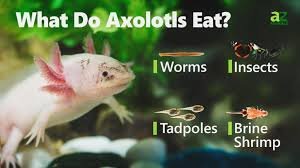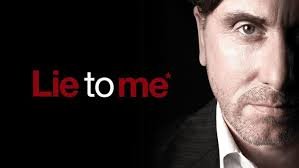
fish food
Providing the right fish food is essential for maintaining a healthy and vibrant aquarium. Whether you have freshwater or saltwater species, tropical fish or goldfish, choosing the appropriate diet affects your fish’s growth, coloration, immune system, and lifespan. Fish food is not just about feeding—it’s about replicating natural nutrition in a confined, man-made environment.
This article dives deep into the world of fish food, exploring types of food, nutritional components, feeding frequency, species-specific requirements, and common mistakes. Whether you’re a beginner or an experienced aquarist, this comprehensive guide will help ensure your fish receive the optimal diet.
Types of Fish Food
There are various types of fish food available, each formulated for specific species and environments. Understanding the options will help you choose the most suitable type for your aquatic pets.
1. Flake Food
Flake food is the most common and widely available type. It floats on the surface and slowly sinks, making it ideal for top- and mid-level feeders.
- Best for: Community tanks with multiple species
- Advantages: Easy to feed, widely available
- Limitations: Loses nutritional value quickly once wet
Example: TetraMin Tropical Flakes
2. Pellet Food
Pellets come in floating, slow-sinking, and sinking forms. They are denser than flakes and often used for larger fish or bottom dwellers.
- Best for: Goldfish, cichlids, koi, catfish
- Advantages: Long shelf life, more concentrated nutrients
- Limitations: May be ignored by surface feeders
3. Freeze-Dried Food
Freeze-dried fish food retains much of the original nutrients found in live prey. Common options include bloodworms, brine shrimp, and tubifex worms.
- Best for: Bettas, discus, gouramis
- Advantages: Safe from parasites, protein-rich
- Limitations: Lacks moisture, must be soaked before feeding
Example: Hikari Bio-Pure Freeze Dried Bloodworms
4. Frozen Fish Food
Frozen food is closer to a natural diet and includes items like frozen brine shrimp, mysis shrimp, or daphnia.
- Best for: Marine and freshwater carnivores
- Advantages: High in nutrients, minimal processing
- Limitations: Needs freezer storage, more expensive
5. Live Food
Live food mimics the natural hunting behavior of fish. Examples include daphnia, mosquito larvae, blackworms, and feeder fish.
- Best for: Predatory species like arowanas, bettas, and cichlids
- Advantages: Stimulates natural instincts, very nutritious
- Limitations: Risk of disease transmission, harder to manage
Live food breeding guides are available at Aquarium Co-Op.
6. Gel Food
Gel food is a newer option that you prepare by mixing powder with water and letting it set. It allows for custom nutrient profiles and feeding textures.
- Best for: All species including fry and picky eaters
- Advantages: Highly customizable, low waste
- Limitations: Requires preparation
Nutritional Needs of Fish
Just like humans, fish need a balanced diet to thrive. Different species have different dietary needs—some are herbivores, others are carnivores, and many are omnivores.
Key nutritional components:
- Protein: Essential for growth and energy. Carnivorous fish need 45–55% protein, while herbivores need 30–40%.
- Fats: Provide energy and support cell structure. Important in small amounts.
- Carbohydrates: Limited importance; too much can cause bloating.
- Vitamins and minerals: Necessary for bone development, immune function, and reproduction. Vitamin C is especially important.
- Fiber: Helps with digestion, especially in herbivorous species.
Check detailed nutrition profiles at FishBase.
Feeding Frequency and Amount
Overfeeding is the most common mistake in fish keeping. Uneaten food leads to water pollution, causing harmful ammonia and nitrite spikes.
General feeding guidelines:
- Feed 1–2 times daily
- Provide only what the fish can eat in 2–3 minutes
- For fry (baby fish), feed 3–5 times a day in small amounts
- Fasting once a week helps digestive health
Note: Always observe your fish during feeding. Lethargy, food rejection, or bloating may signal dietary issues or illness.
Species-Specific Diet Examples
Different species have specific food preferences and requirements.
Goldfish
- Diet: Primarily omnivorous
- Best food: Sinking pellets, gel food, occasional blanched vegetables
- Avoid: High-protein tropical flakes (can cause swim bladder issues)
Betta Fish
- Diet: Carnivorous
- Best food: Freeze-dried or frozen bloodworms, betta pellets
- Avoid: Plant-based flakes, as they lack needed protein
Cichlids
- Diet: Varies by species (some are omnivorous, others carnivorous)
- Best food: Cichlid-specific pellets, frozen krill, spirulina flakes
Tetras and Guppies
- Diet: Omnivorous
- Best food: Tropical flakes, micro pellets, brine shrimp
Bottom Feeders (e.g., Corydoras, Plecos)
- Diet: Omnivorous, scavengers
- Best food: Algae wafers, sinking pellets, blanched zucchini
Feeding in Special Conditions
During Breeding
- Increase protein content with live or frozen food like bloodworms
- Feed smaller portions more frequently
Fry and Juvenile Fish
- Use powdered fry food or infusoria
- Gradually introduce crushed flakes or baby brine shrimp
Vacation Feeding
- Use vacation blocks or automatic feeders
- For short trips (2–3 days), healthy adult fish can go unfed
Common Mistakes in Fish Feeding
Avoid these frequent errors:
- Overfeeding: Leads to obesity and poor water quality
- Feeding wrong type of food: Can cause malnutrition or digestive problems
- Ignoring expiry dates: Old food loses nutrients and may become toxic
- Inconsistent feeding schedule: Causes stress and weakened immunity
How to Store Fish Food Properly
Proper storage ensures food retains its nutritional value:
- Keep in a cool, dry place away from sunlight
- Seal packages tightly after use
- Refrigerate or freeze freeze-dried and frozen foods
- Use within 6 months of opening dry foods
Avoid feeding moldy or clumped food, as it may contain harmful bacteria.
Making Homemade Fish Food
Homemade fish food allows full control over ingredients and can be cost-effective.
Basic recipe:
- Base: Cooked peas, carrots, spinach
- Protein: Boiled egg yolk, shrimp, fish fillet
- Binder: Gelatin or agar-agar
- Instructions: Blend all ingredients, set with gelatin, cut into cubes
Custom recipes and tips can be found at The Spruce Pets.
Conclusion
Feeding your fish properly is crucial for their health, behavior, and water quality. With so many types of fish food available—from flakes to live prey—understanding your species’ needs ensures they thrive in captivity. Focus on balanced nutrition, portion control, and feeding habits that mimic natural conditions. By doing so, you’ll create a more stable, lively, and beautiful aquarium environment.






